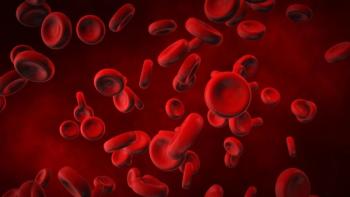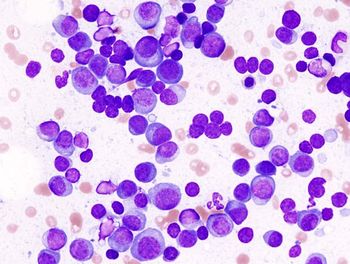
Oncology NEWS International
- Oncology NEWS International Vol 5 No 10
- Volume 5
- Issue 10
WHO Adds More Opioids to its Analgesic Ladder for the Treatment of Cancer Pain
MADISON, Wis--The World Health Organization (WHO), which first published its analgesic ladder in the original 1986 version of Cancer Pain Relief, has now issued an updated 2nd edition of the book that includes additional alternative opioids such as hydromorphone, oxycodone, and transdermal fentanyl, David E. Joranson, MSSW, said at the WHO workshop on cancer pain at the 8th World Congress on Pain.
MADISON, Wis--The World Health Organization (WHO), which firstpublished its analgesic ladder in the original 1986 version ofCancer Pain Relief, has now issued an updated 2nd edition of thebook that includes additional alternative opioids such as hydromorphone,oxycodone, and transdermal fentanyl, David E. Joranson, MSSW,said at the WHO workshop on cancer pain at the 8th World Congresson Pain.
The WHO approach to pain relief is to use simple technology anda select group of drugs that should be available in all countries,said Mr. Joranson, director of the Pain and Policy Studies Groupand WHO Collaborating Center for Policy and Communications inCancer Care, University of Wisconsin, Madison. He added that the2nd edition addresses many of the advances in understanding andpractice that have arisen in the last 10 years.
The WHO analgesic ladder allows for the sequential use of progressivelystronger analgesic agents, in combination with adjuvant therapiesif indicated, such as antidepressants, anti-convulsants, corticosteroids,and various nondrug therapies.
In step 1, a non-opioid is used. If this does not relieve thepain, an opioid for mild to moderate pain should be added (step2). If this combination strategy fails to relieve the pain, anopioid for moderate to severe pain should be substituted, withnonopioid and adjuvant therapies continued if appropriate (step3).
One Drug at a Time
Only one drug from each of the groups should be used at the sametime, the WHO guidelines recommend. If a step 2 opioid ceasesto be effective, the physician should prescribe a stronger agentrather than switch to an alternative step 2 drug.
Morphine and some other opioids do not have a ceiling effect (whenincreasing the dose above a certain level does not provide furtherrelief) and thus can be safely administered in increasing amountswithout risking an overdose, as long as side effects are tolerated.
The guidelines emphasize that "the correct morphine doseis the dose that works," and can range from as little as5 mg to more than 1,000 mg every 4 hours, although in most patients,doses of 10 mg to 30 mg every 4 hours are adequate.
WHO emphasizes that doses should be given on a regular scheduleto maintain continuous pain relief.
In patients with moderate to severe pain who are intolerant tomorphine, WHO recommends a trial of an alternative opioid, suchas methadone (Dolophine), hydromorphone (Dilau-did), oxycodone(Roxicodone), or levorphanol (Levo-Dromoran).
The guidelines also mention transdermal patches (fentanyl, Dur-agesic)as an alternative route of administration of opioids.
Articles in this issue
about 26 years ago
Anesthetic Interventions Rise When Anesthesiologists Join the Pain Teamabout 26 years ago
Worldwide UN Survey Shows Many Impediments to Morphine Availabilityabout 26 years ago
Case-Based Pain Curriculum Used in Canadian Schoolsabout 26 years ago
Pain Descriptions May Predict Presence of Neuropathic Painabout 26 years ago
Neurotoxicity Related to High-Dose Opioid Therapy Can Be ManagedNewsletter
Stay up to date on recent advances in the multidisciplinary approach to cancer.

















































































